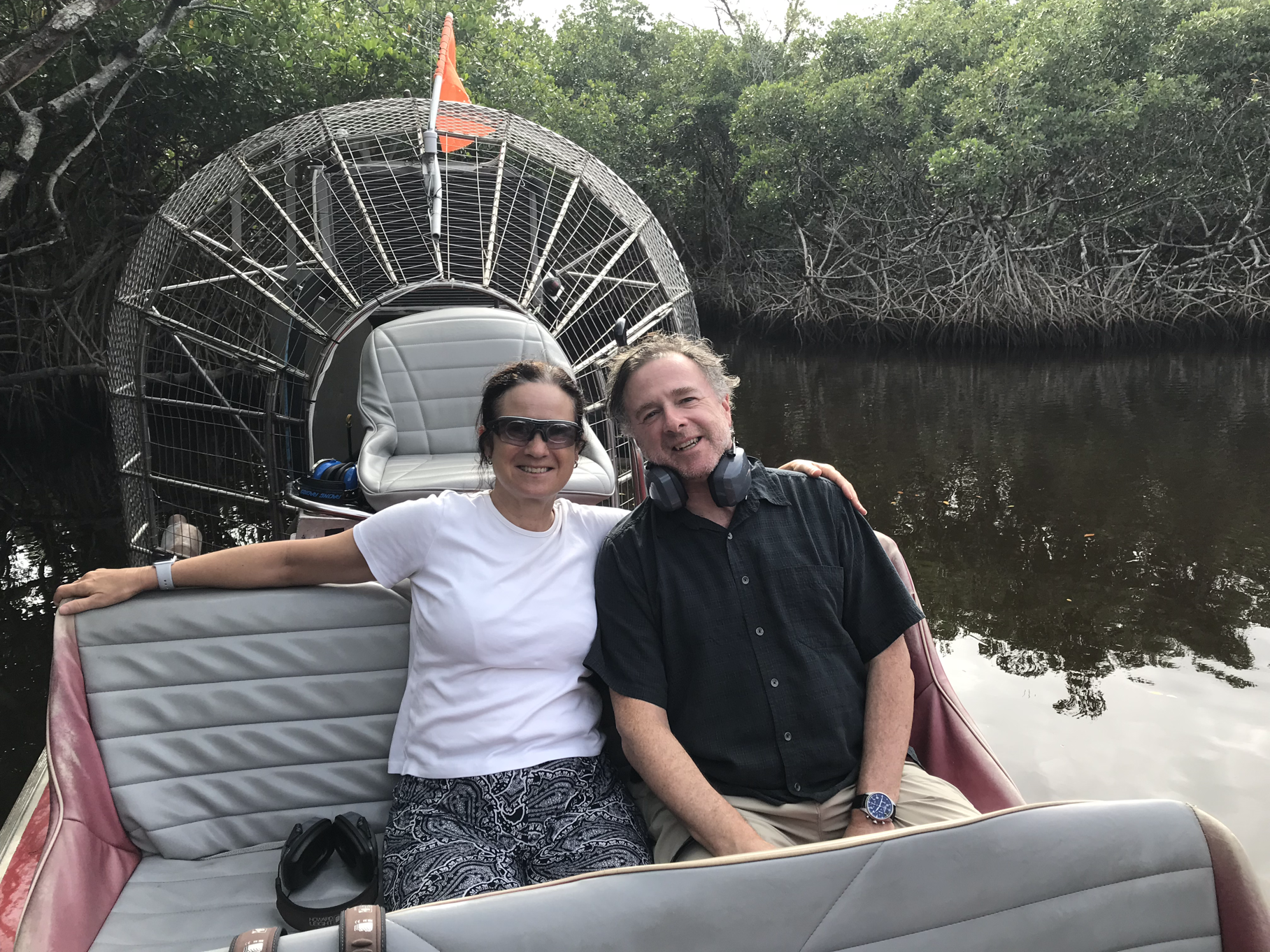Our ride ended after a late night arrival from Key West to Fort Myers on the “booze cruise” high speed ferry. We picked up a mini-van in which we could roll the bikes so we could roll much more rapidly from Fort Myers to Everglades City.
The elusive allure of the Everglades eluded us. Still, the Everglades are one of world’s largest swamps, very important as a giant water filtration system and a habitat for birds, fish, alligators, and smaller creatures. It is under assault for its fresh water supply. It is a harsh environment for humans and human aspirations.
People have thought it could be a vast ranch or a vast sugar plantation. Both have been tried. But, the insects and the lack of solid land have thwarted man’s greed and ambition and still do.
One man’s ambition has made Everglades City the gateway to paradise for game fishing, some commercial fishing (stone crabs and spiny lobsters), and birding. Few enter, but fortunately most manage to leave. Everglades City and Chokoloskee Island remained an inhospitable frontier long after other parts of the US were tamed. You can see the history of it and feel the remnants of that history even today.
Collier started the Everglades recreation empire and Cap’n Jack seemingly has inherited it. We were guests at Cap’n Jack’s hotel and rode his airboats. We enjoyed our airboat ride through the tunnels cut from dense mangrove forests (above), but wished for more open views.
Part of the old seemingly colonial (though there were no Seminoles left to colonize, courtesy of Andrew Jackson’s March of Tears) sport fishing tourism is the Rod and Gun Club which has hosted presidents and movie stars in its earlier days of rustic glory. We were amiably hosted and immersed in the history at dinner:
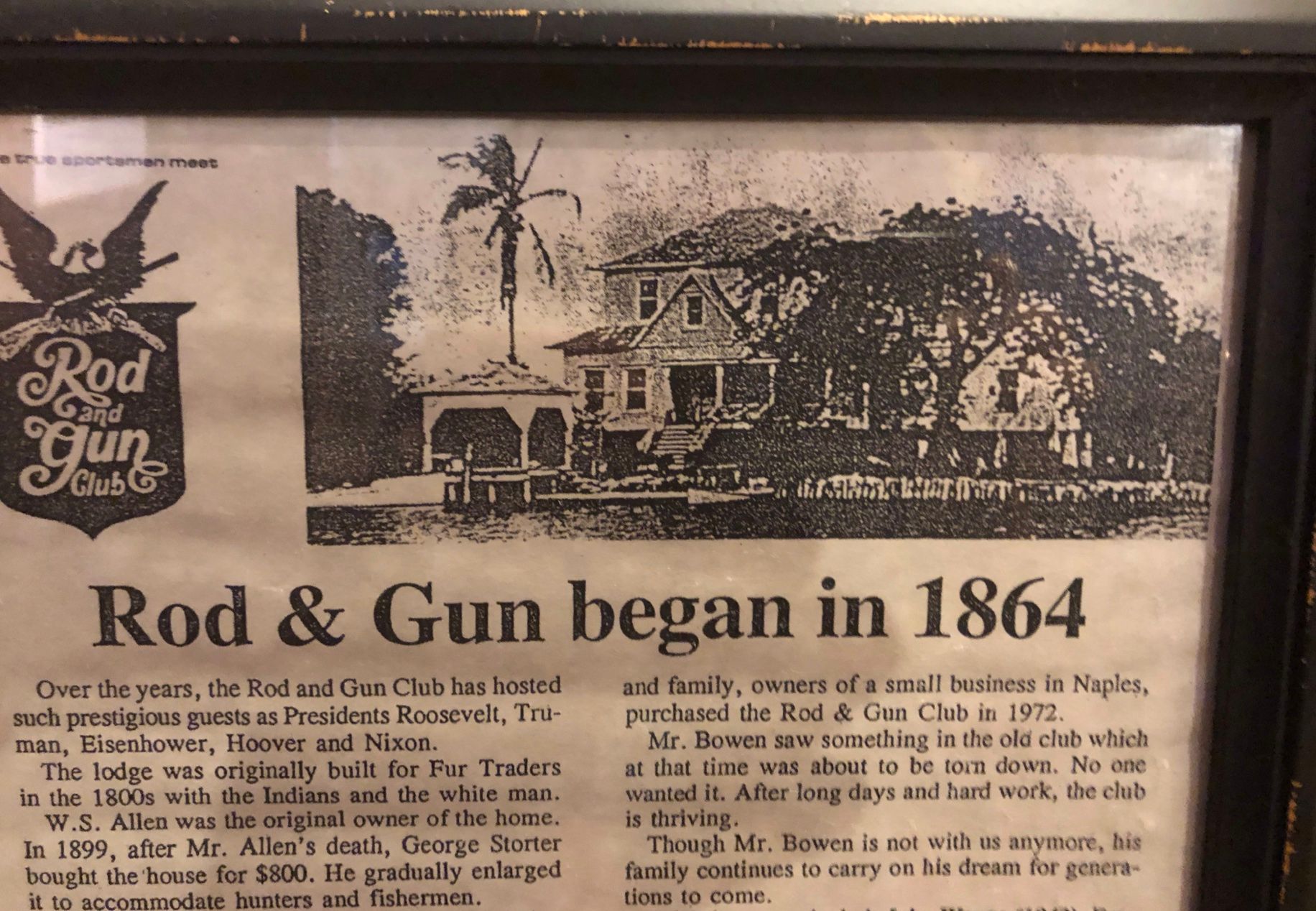
The lobby:
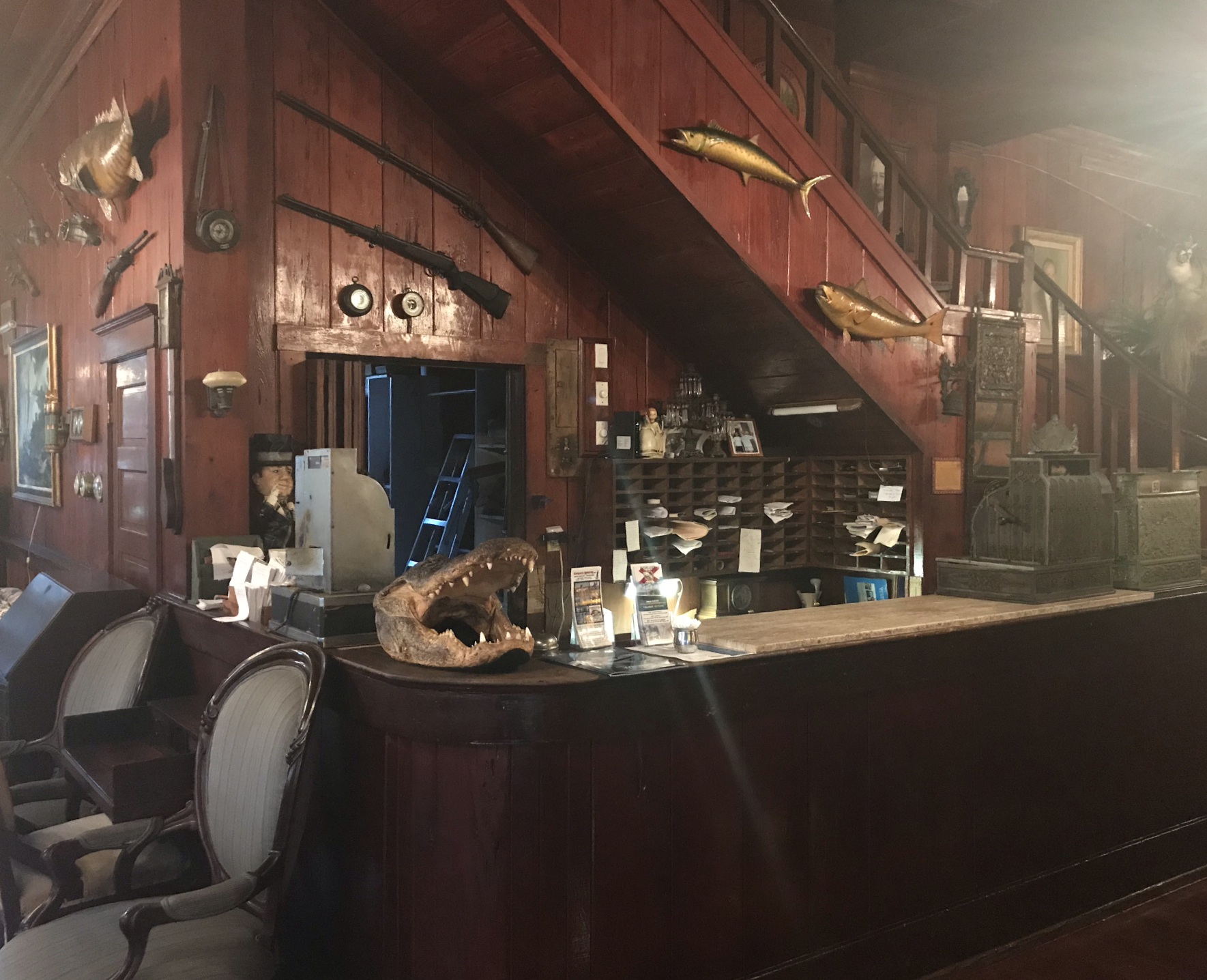
They shoot alligators, don’t they?
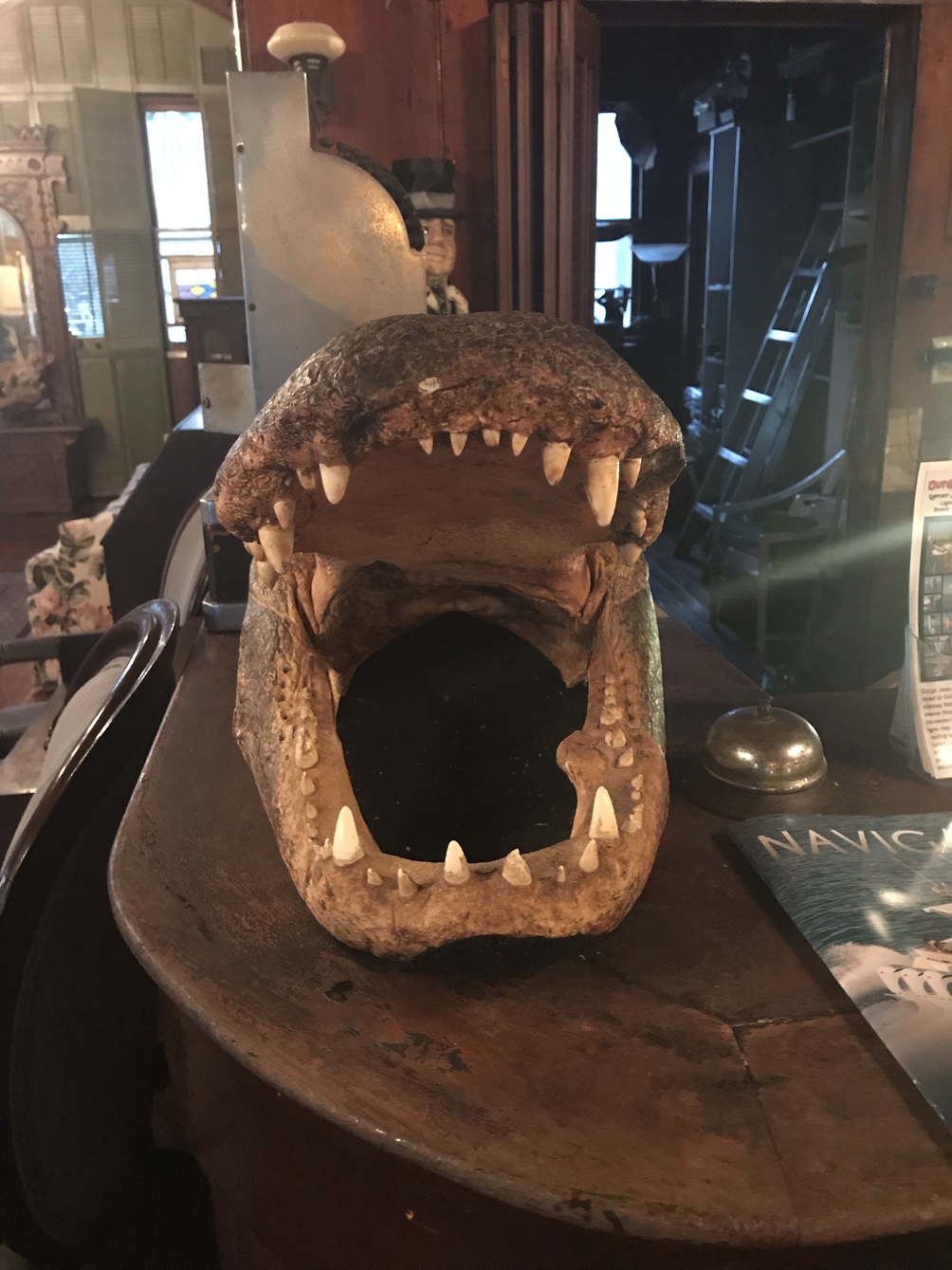
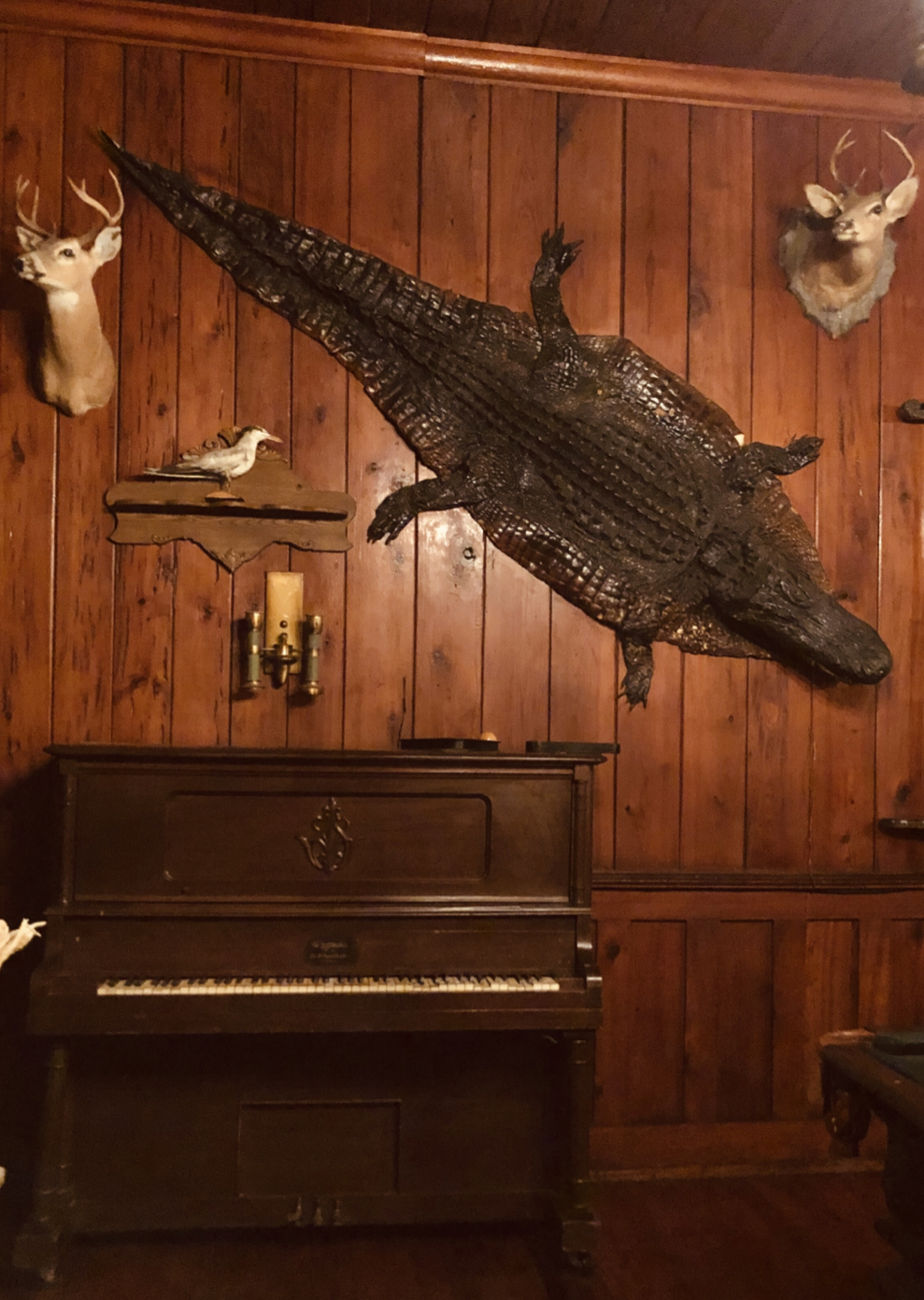
We enjoyed dinner on the veranda:

The next day we took a short bike ride (our last, alas) down the causeway to Chokoloskee Island. The island is one of few solid places in the Ten Thousand Islands group, formed by the interplay of middens created by the Calusa Indians, the mangroves, and the currents. Smallwood opened a trading post to trade with the Indians, providing manufactured essentials in return for furs and silver coins.
The store is now a museum, probably no more cluttered today than in the days of old man Smallwood:



